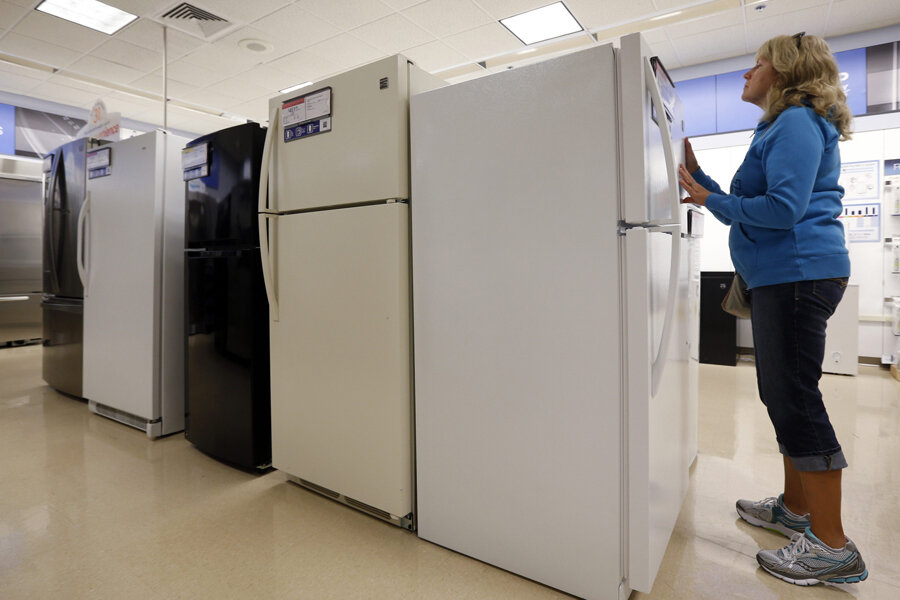US gross domestic product grows at 4 percent rate in second quarter
Loading...
| Washington
After a dismal winter, the US economy sprang back to life in the April-June quarter, growing at a fast 4 percent annual rate on the strength of higher consumer and business spending.
The rebound reported Wednesday by the Commerce Department followed a sharp 2.1 percent annualized drop in economic activity in the January-March quarter. That figure was revised up from a previous estimate of a 2.9 percent drop. But it was still the biggest contraction since early 2009 in the depths of the Great Recession.
Last quarter's bounce-back was broad-based, with consumers, businesses, the housing industry and state and local governments all combining to fuel growth. The robust expansion will reinforce analysts' view that the economy's momentum is extending into the second half of the year, when they forecast an annual growth rate of around 3 percent.
The government on Wednesday also updated its estimates of growth leading into this year. They show the economy expanded in the second half of 2013 at the fastest pace in a decade and more than previously estimated. The revised data also show that the economy grew faster in 2013 than previously estimated, though more slowly in 2011 and 2012 than earlier thought.
The second quarter's 4 percent growth in the gross domestic product (GDP) — the economy's total output of goods and services — was the best showing since a 4.5 percent increase in July-September quarter of 2013.
At the same time, a higher trade deficit slowed growth as imports outpaced a solid increase in exports.
Paul Ashworth, chief US economist at Capital Economics, said that given the solid rebound last quarter, he's boosting his estimate for growth this year to a 2 percent annual rate, up from a previous 1.7 percent forecast. Ashworth said the rebound also supported his view that the Federal Reserve, which is ending a two-day meeting Wednesday, will be inclined to start raising interest rates early next year.
Most economists have been predicting that the Fed would wait until mid-2015 to start raising rates.
"At the margin, this GDP report supports our view that an improving economy will persuade the Fed to begin raising rates in March next year," Ashcroft wrote in a research note.
Ashcroft is among a group of economists who think growing strength in the job market and the overall economy will prod the Fed to move faster to raise rates to make sure inflation doesn't get out of hand.
The GDP report showed that one measure of inflation rose 2 percent last quarter, up from a 1.3 percent rise in the first quarter. The Fed's inflation target is 2 percent, and for two years the GDP measure of inflation has been running below that level. Low inflation has given the Fed leeway to focus on boosting growth to fight high unemployment.
The economy's sudden contraction in the first quarter of this year had resulted from several factors. A severe winter disrupted activity across many industries and kept consumers away from shopping malls and auto dealerships. Consumer spending slowed to an annual growth rate of just 1.2 percent, the weakest showing in nearly three years.
Last quarter, consumer spending, powered by pent-up demand, accelerated to a growth rate of 2.5 percent. That was double the pace of the first quarter.
Spending on durable goods such as autos surged at a 14 percent annual rate, the biggest quarterly gain since 2009. Analysts said that was an encouraging sign of consumers' growing willingness to increase purchases of big-ticket items like cars.
Consumer spending is closely watched because it accounts for more than two-thirds of economic activity.
In the April-June quarter, business investment in new equipment jumped at a 7 percent rate after having fallen 1 percent in the first quarter. That setback had reflected the expiration of business tax breaks at the end of 2013. Those tax breaks led companies to boost equipment spending at the end of last year.
Businesses, optimistic about future demand, increased their stockpiling last quarter. The increase in inventories contributed two-fifths of the growth in the quarter after having subtracted 1 percentage point from first-quarter activity.
Housing, which had been falling for two straight quarters, rebounded in the spring, growing at a 7.5 percent annual rate.
Government spending also recovered after two consecutive declines. The strength came from state and local governments, which offset the seventh quarterly decline in federal government spending.
The government's revised estimates of growth going back to 2011 show the economy expanded at an annual rate of 4.5 percent in last year's third quarter, up from a previous 4.1 percent estimate. The growth rate was 3.5 percent in the fourth quarter, up from an earlier 2.6 percent estimate.
For 2013 as a whole, the government said the economy grew 2.2 percent, up from its earlier 1.9 percent estimate. But growth was weaker in 2011 and 2012 than previously estimated. It grew 2.3 percent in 2012, down from 2.8 percent. And growth in 2011 was downgraded to 1.6 percent from 1.8 percent.







